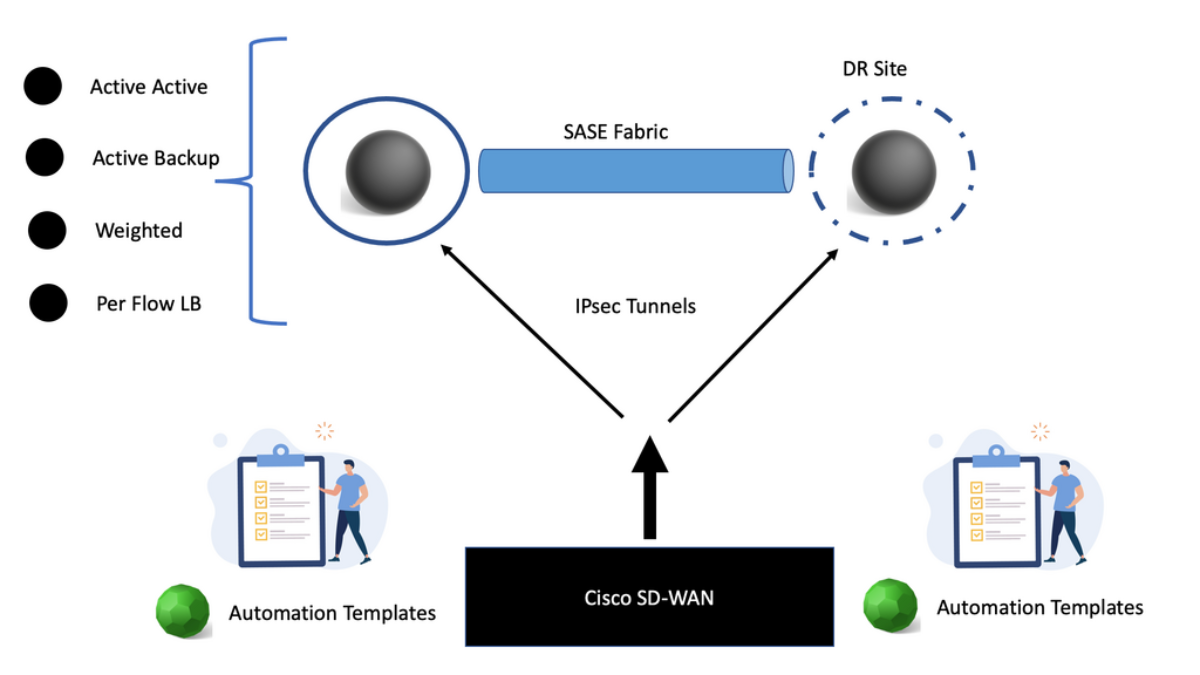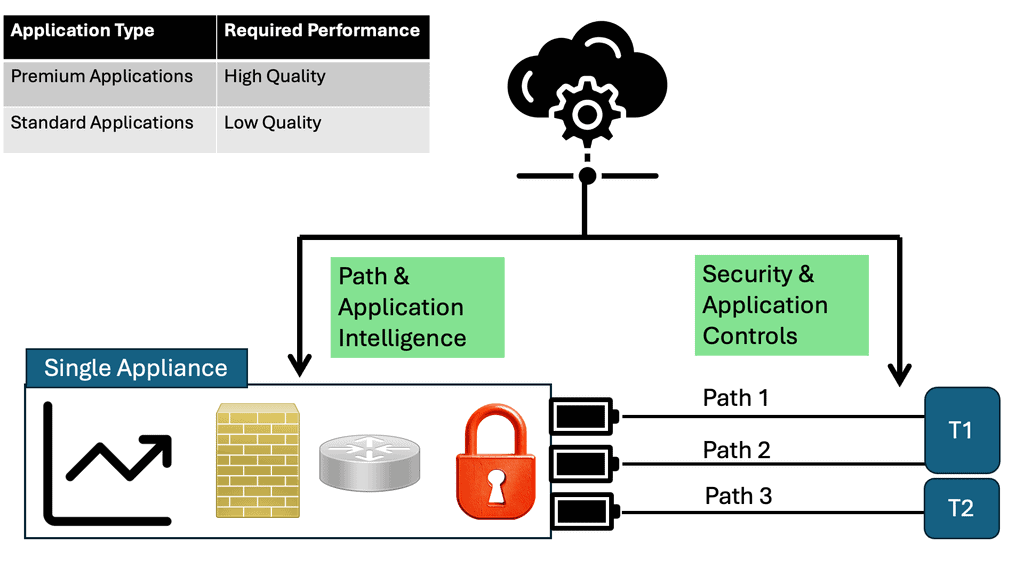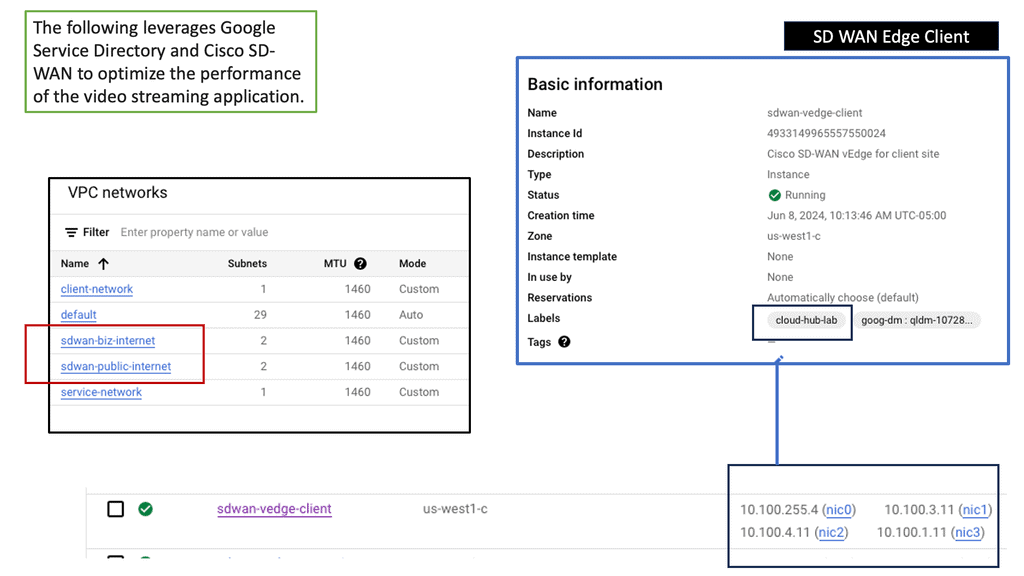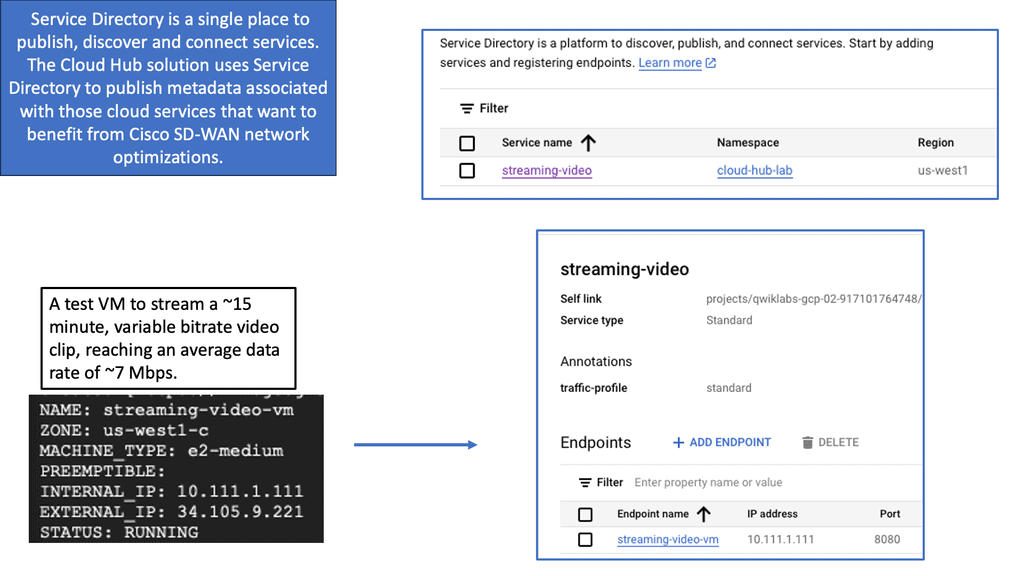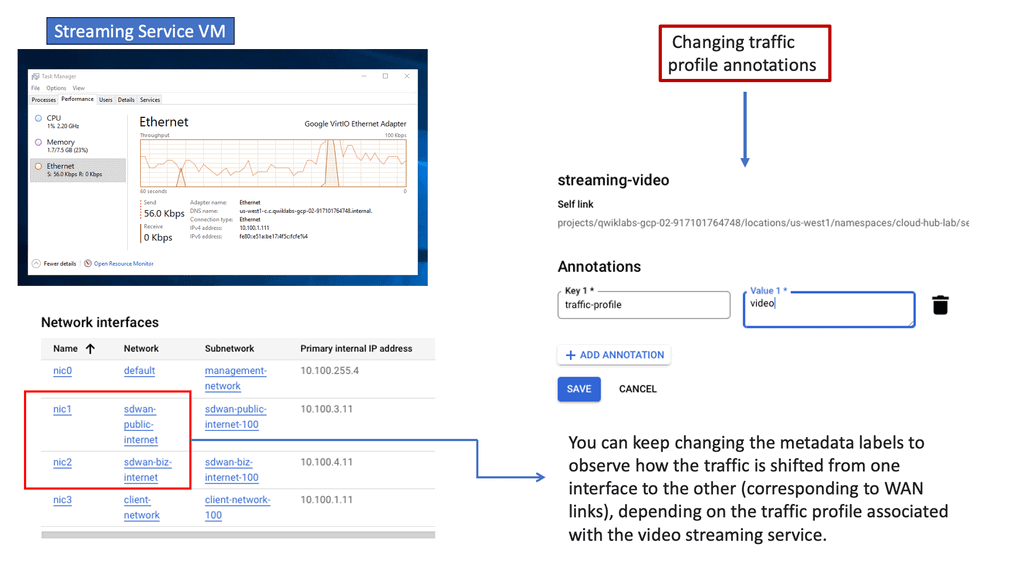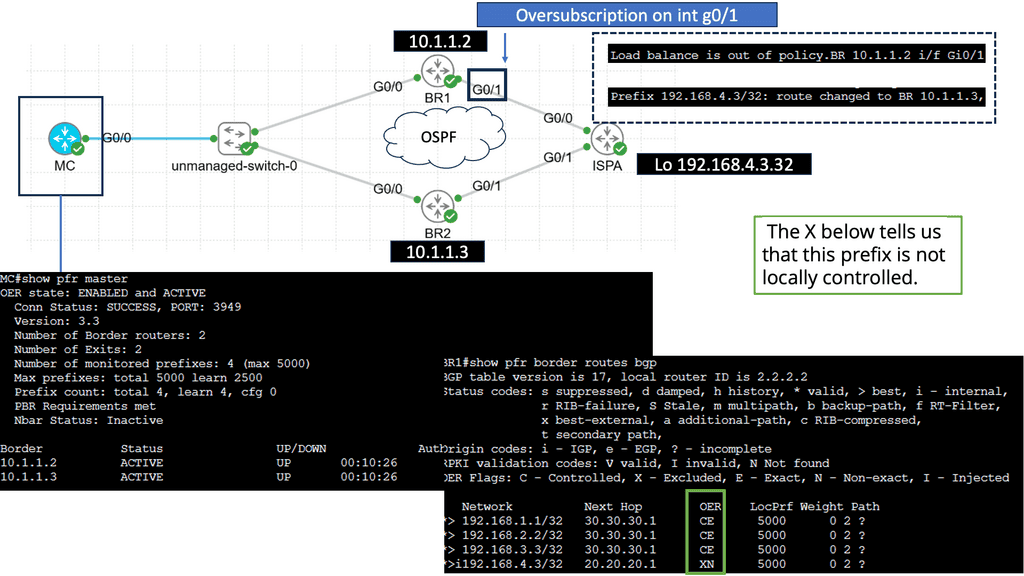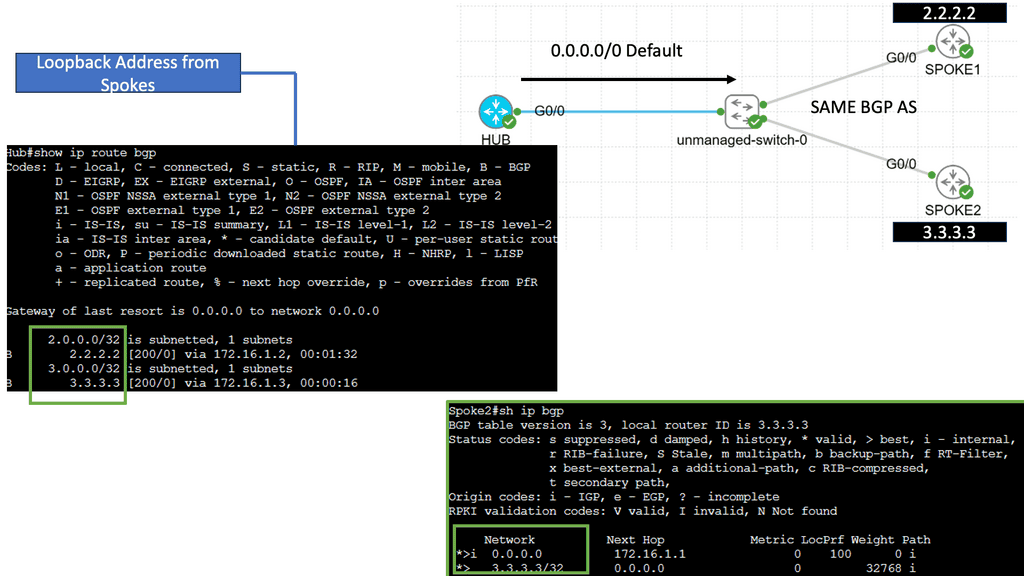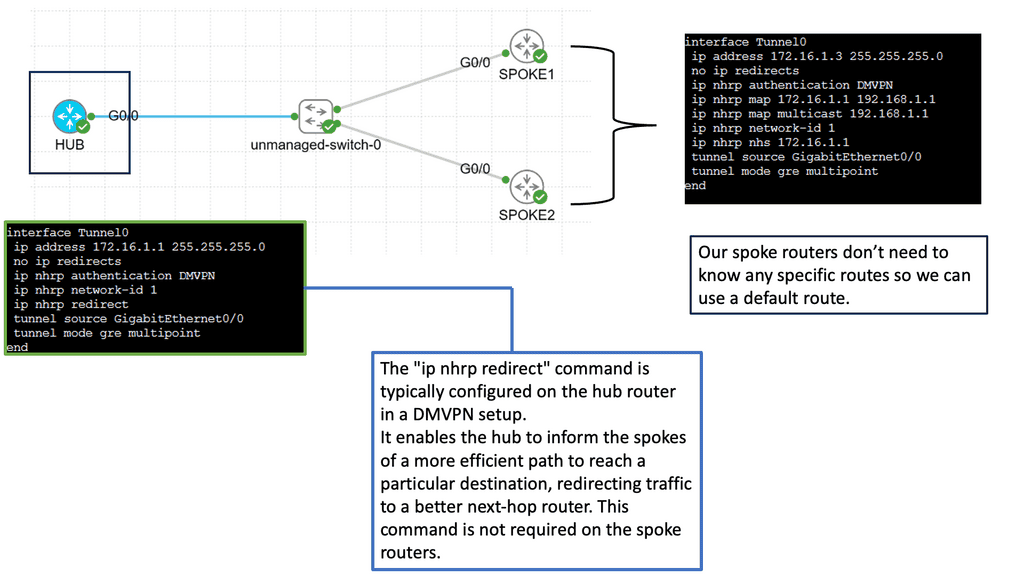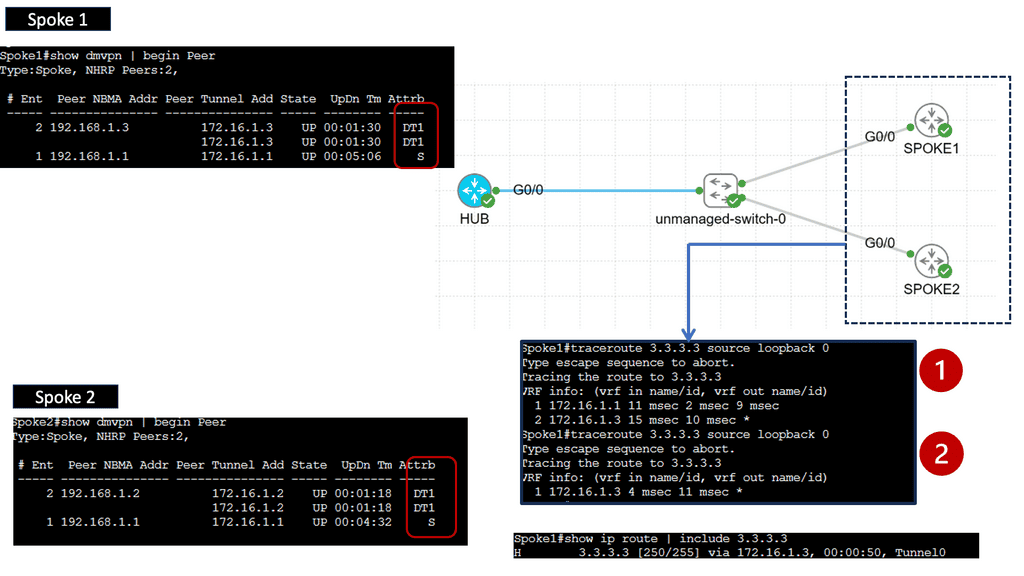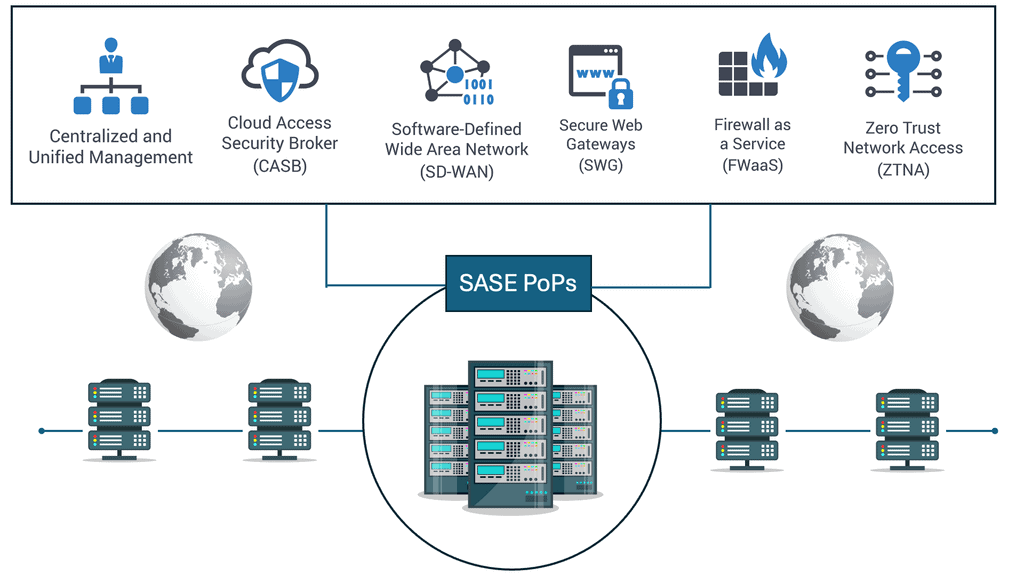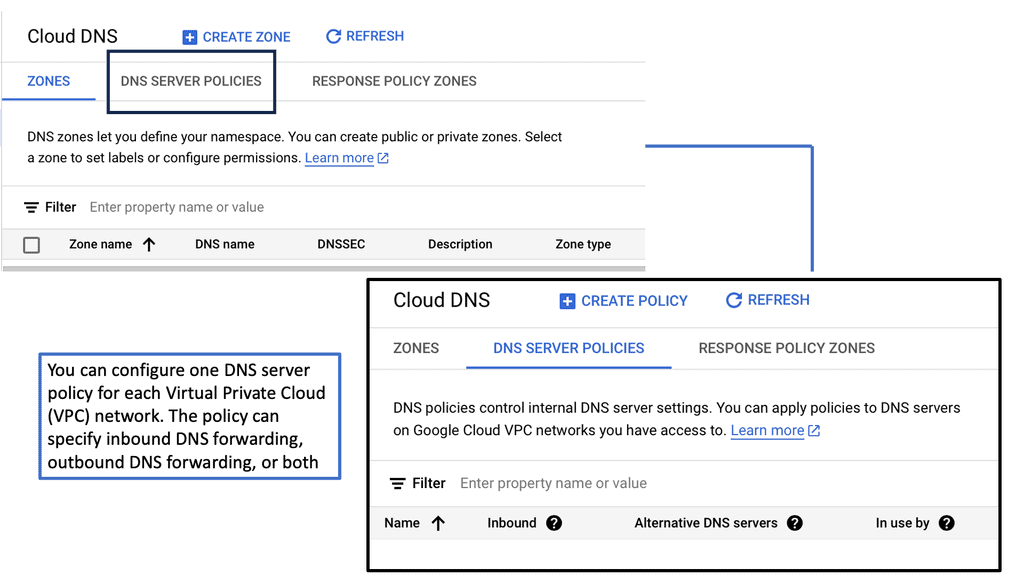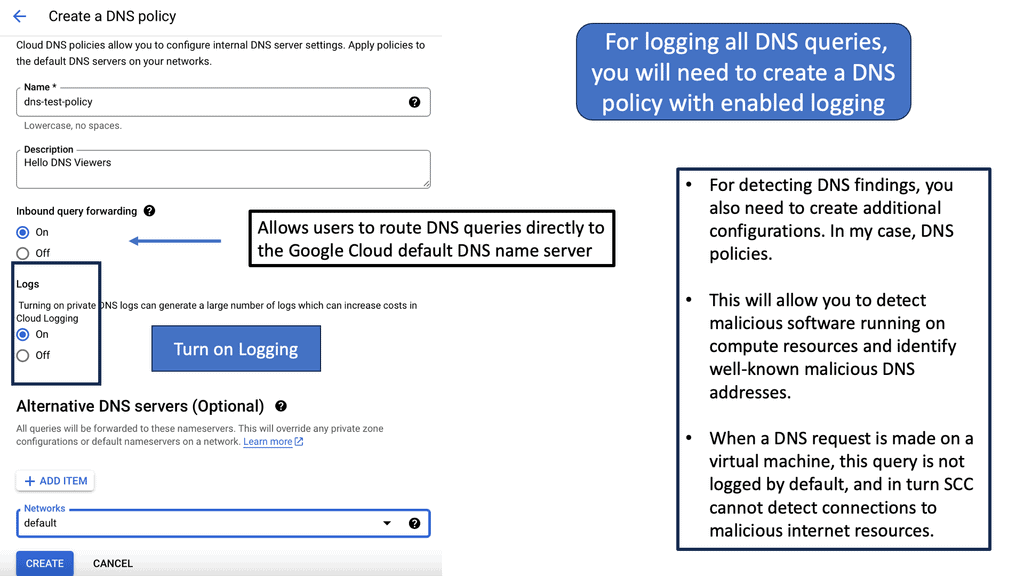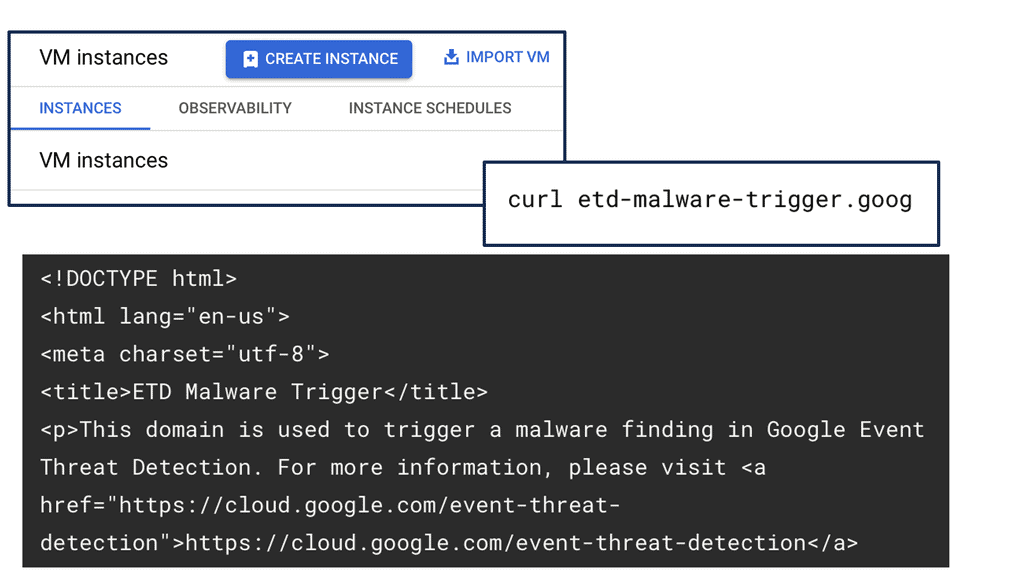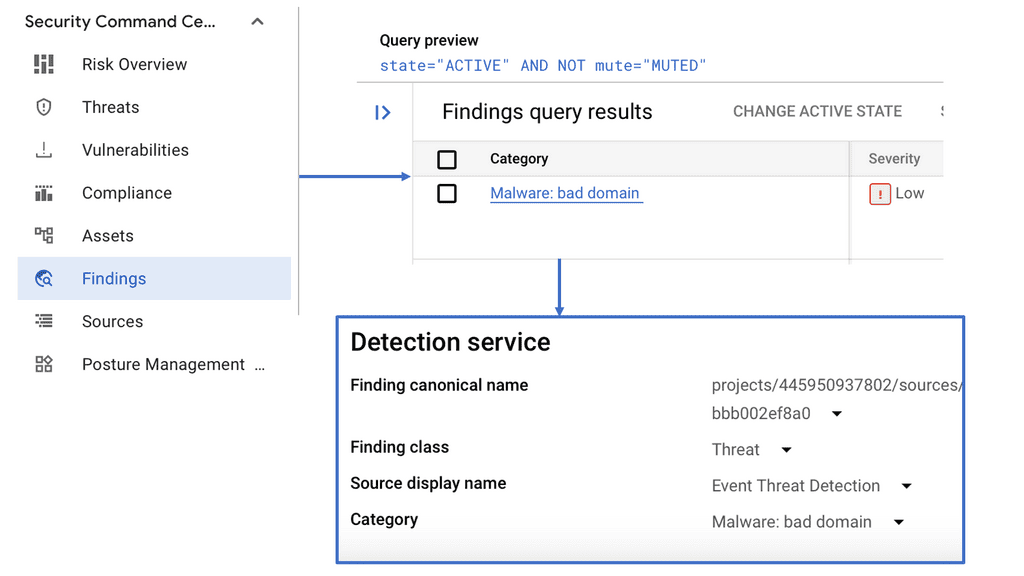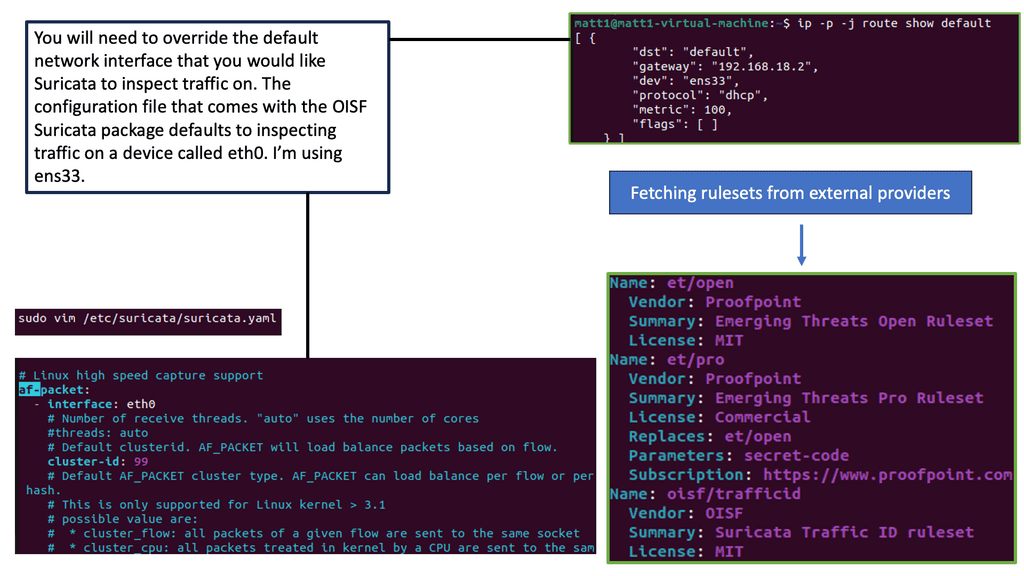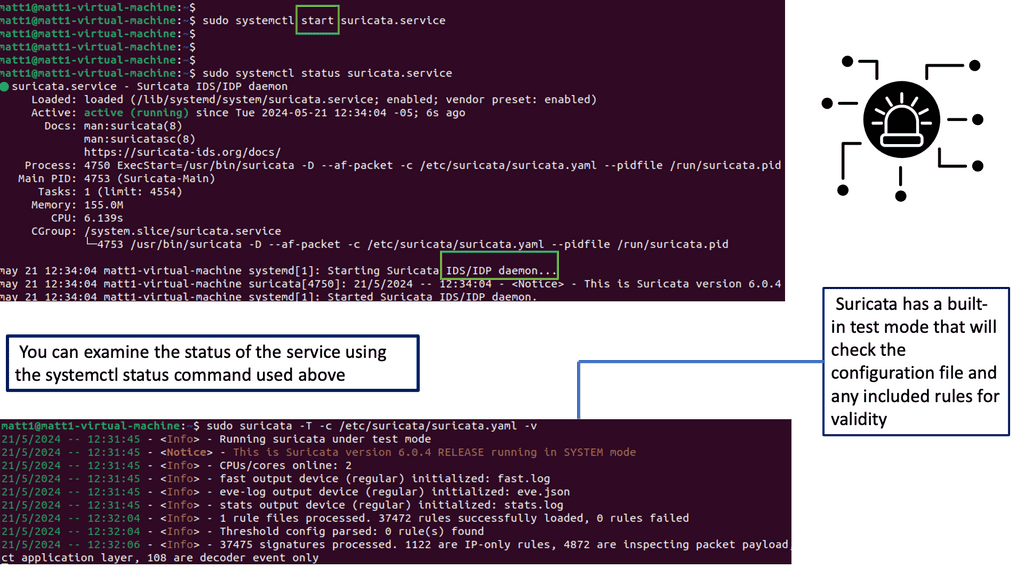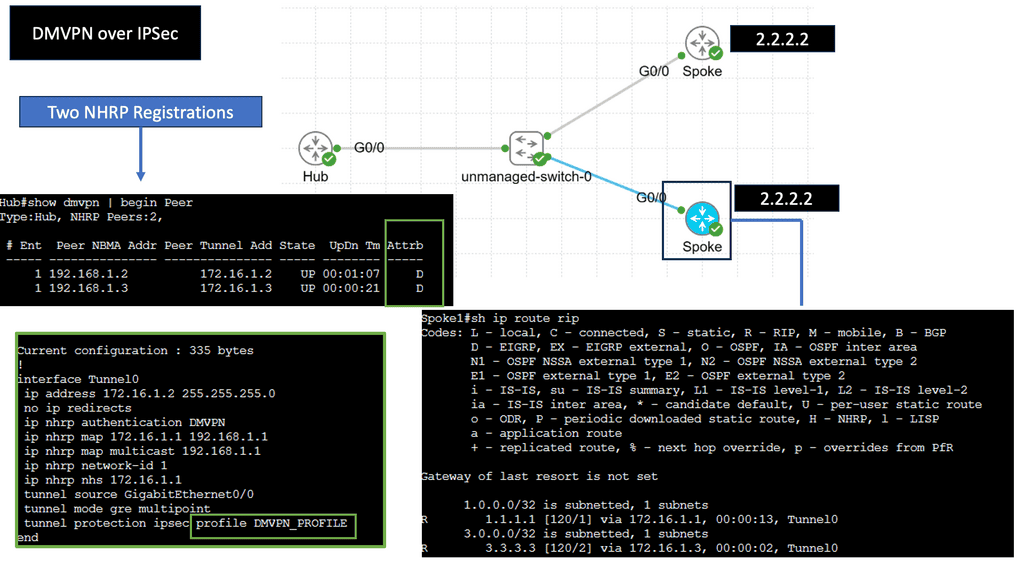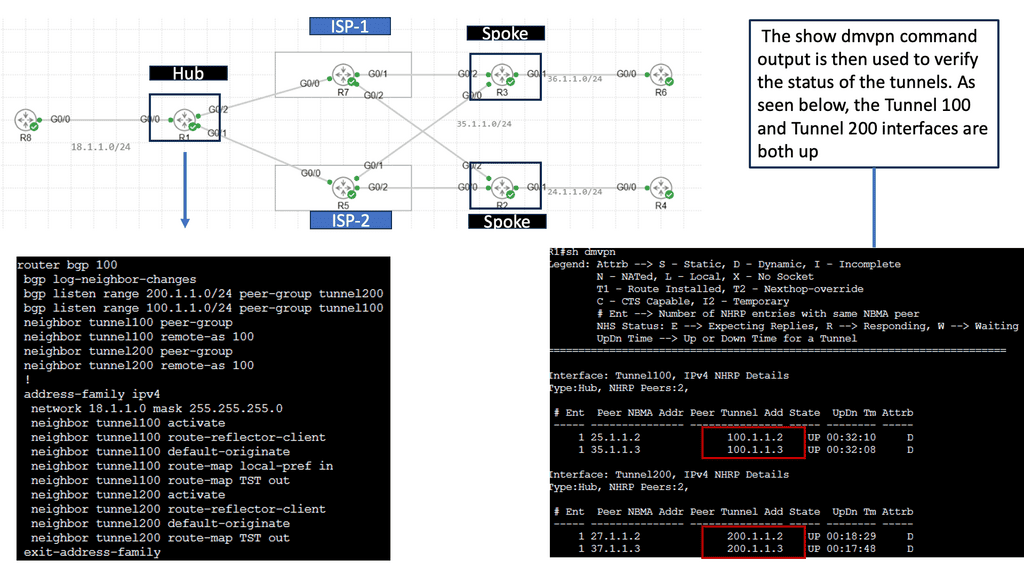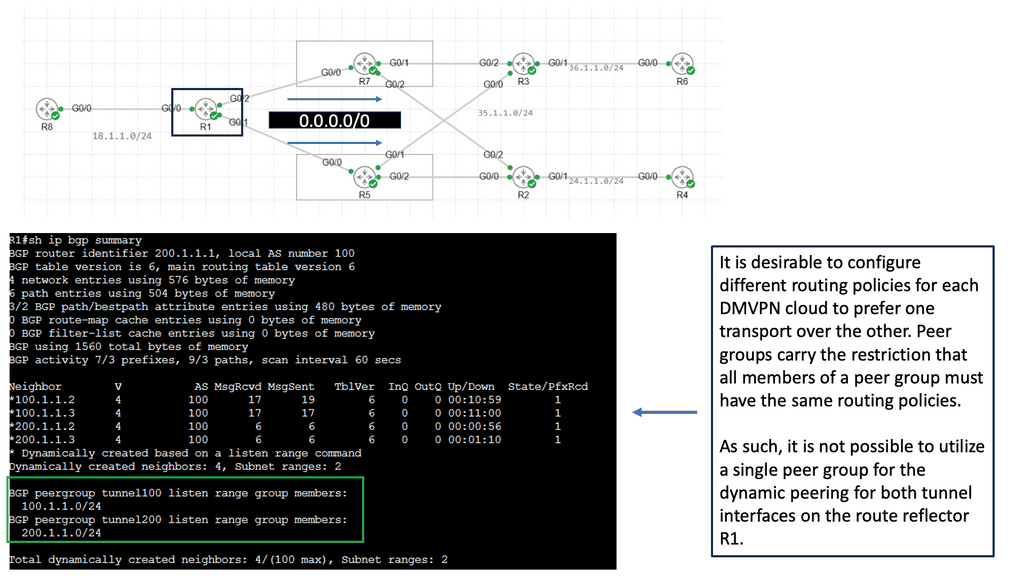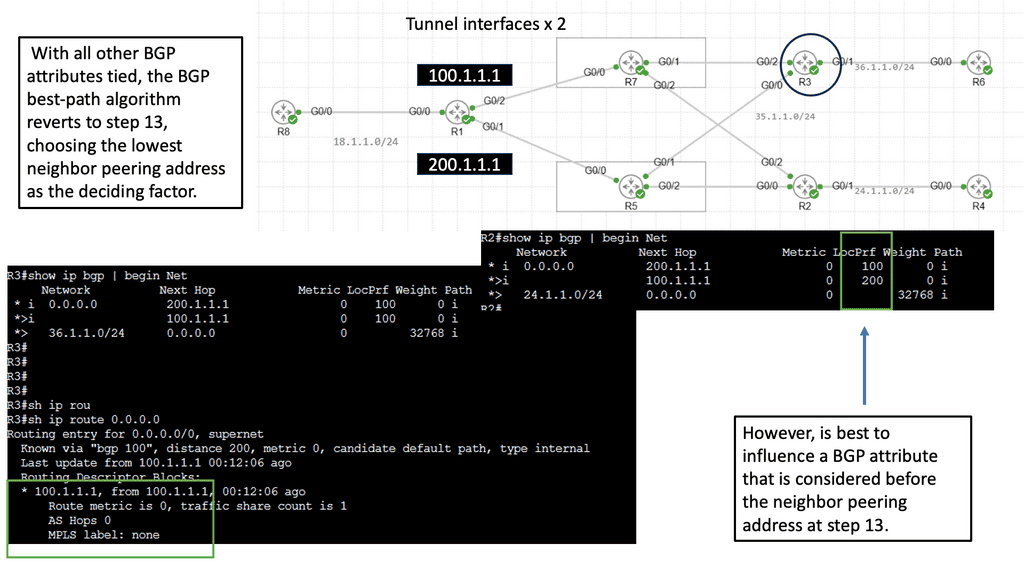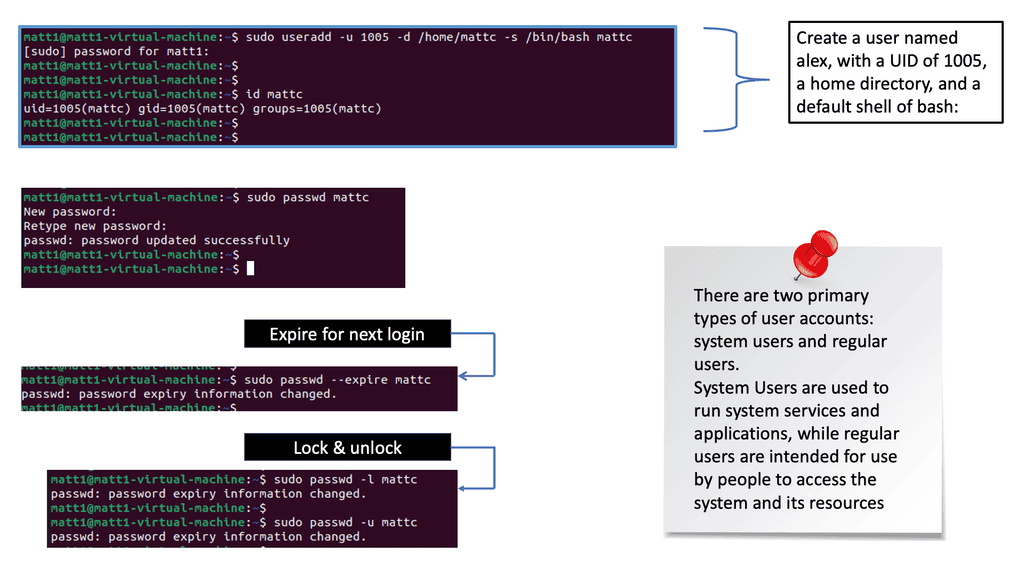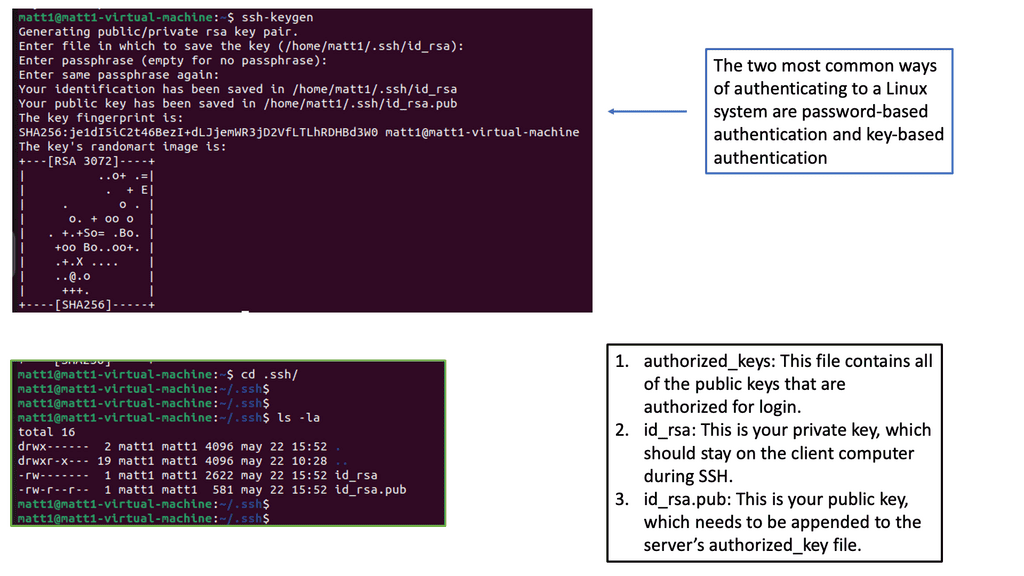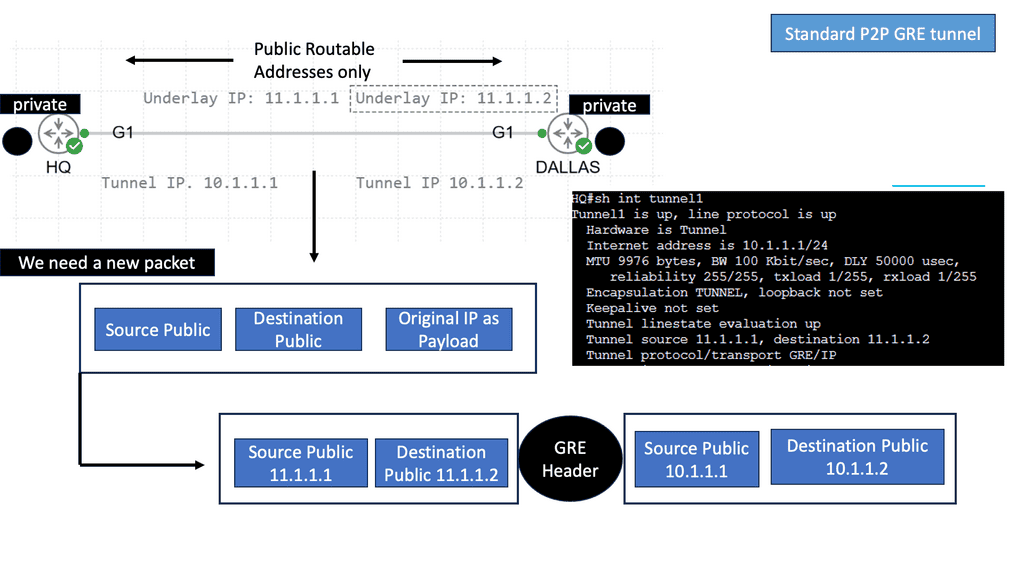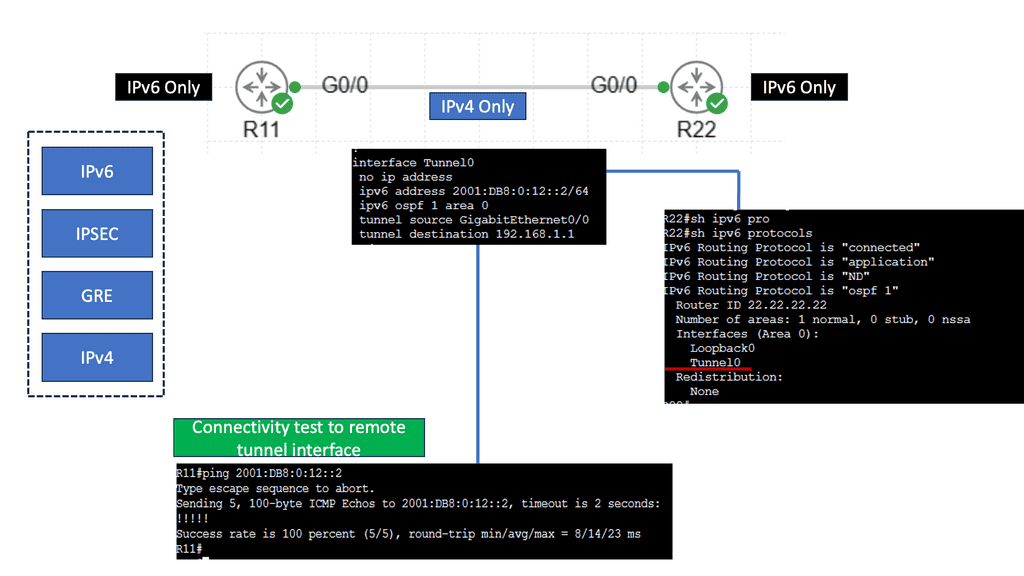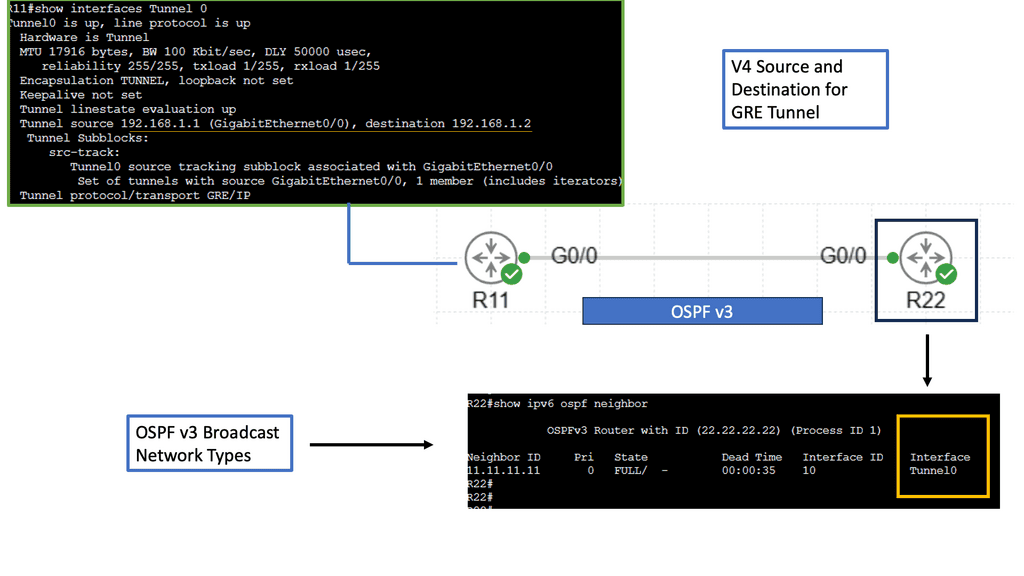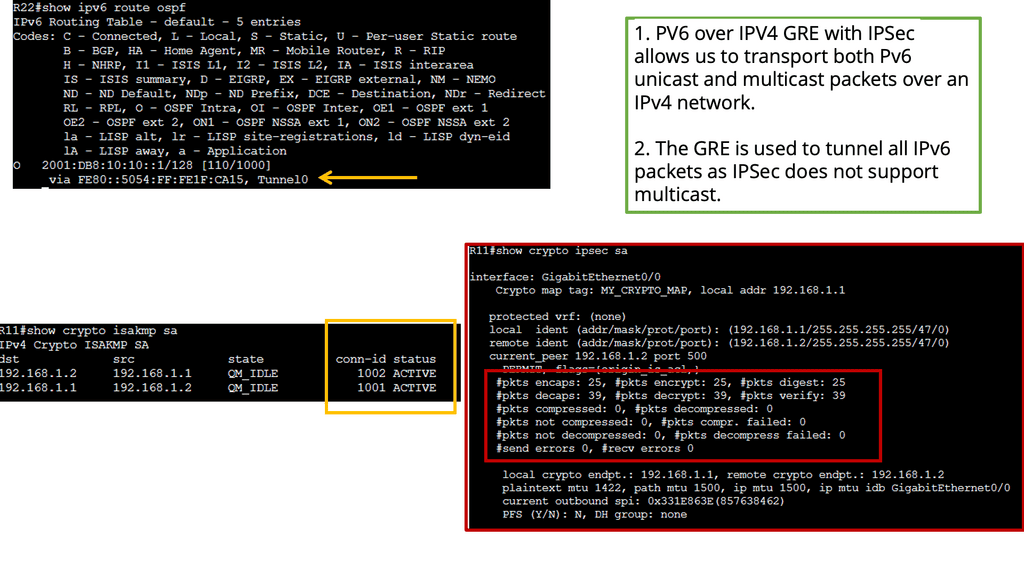SD WAN SASE
SD-WAN, or Software-Defined Wide Area Networking, is a transformative technology that enhances network connectivity for geographically dispersed businesses. By utilizing software-defined networking principles, SD-WAN empowers organizations to optimize their wide area network infrastructure, reduce costs, and improve application performance. The key features of SD-WAN include dynamic path selection, centralized management, and enhanced security capabilities.
Secure Access Service Edge, or SASE, is an emerging architectural framework that combines network security and wide area networking into a single cloud-native service. SASE offers a holistic approach to secure network connectivity, integrating features such as secure web gateways, firewall-as-a-service, zero-trust network access, and data loss prevention. By converging security and networking functions, SASE simplifies network management, improves performance, and enhances overall security posture.
Implementing SD-WAN and SASE brings forth a multitude of benefits for businesses. Firstly, organizations can achieve cost savings by leveraging cheaper internet links and reducing reliance on expensive MPLS connections. Secondly, SD-WAN and SASE improve application performance through intelligent traffic steering, ensuring optimal user experience. Moreover, the centralized management capabilities of these technologies simplify network operations, reducing complexity and enhancing agility.
To implement SD-WAN and SASE effectively, businesses need to consider several key factors. This includes evaluating their existing network infrastructure, defining their security requirements, and selecting the appropriate vendors or service providers. It is crucial to design a well-thought-out migration plan and ensure seamless integration with existing systems. Additionally, comprehensive testing and monitoring are essential to guarantee a smooth transition and ongoing success.
As technology continues to evolve, the future of network connectivity lies in the hands of SD-WAN and SASE. These innovative solutions enable businesses to embrace digital transformation, support remote workforces, and adapt to rapidly changing business needs. The integration of artificial intelligence and machine learning capabilities within SD-WAN and SASE will further enhance network performance, security, and automation.
SD-WAN and SASE are revolutionizing network connectivity by providing businesses with scalable, cost-effective, and secure solutions. The combination of SD-WAN's optimization capabilities and SASE's comprehensive security features creates a powerful framework for modern network infrastructures. As organizations navigate the ever-evolving digital landscape, SD-WAN and SASE will undoubtedly play a crucial role in shaping the future of network connectivity.
Matt Conran
Highlights: SD WAN SASE
SD-WAN SASE
Understanding SD-WAN
SD-WAN is a networking approach that utilizes software-defined principles to simplify the management and operation of a wide area network. It replaces conventional hardware-based network appliances with software-based solutions, enabling centralized control and automation of network resources. By separating the control plane from the data plane, SD-WAN optimizes traffic routing and provides enhanced visibility and control over network performance.
One of SD-WAN’s key advantages is its ability to enhance network performance. With traditional WAN architectures, network traffic may suffer from congestion and latency issues, leading to decreased performance and user dissatisfaction.
**Dynamically Routing**
SD-WAN tackles these challenges by dynamically routing traffic across multiple paths, optimizing the utilization of available bandwidth. Additionally, it offers intelligent traffic prioritization and Quality of Service (QoS) mechanisms, ensuring that critical applications receive the necessary bandwidth and delivering an improved user experience.
**Advanced Security Features**
Security is a critical concern for any network infrastructure. SD-WAN addresses this concern by incorporating advanced security features. Encryption protocols, secure tunneling, and traffic segmentation are some of the security mechanisms provided by SD-WAN solutions.
Furthermore, SD-WAN offers improved network resilience by enabling automatic failover and seamless traffic rerouting in case of link failures. This ensures high availability and minimizes the impact of network disruptions on critical business operations.
Cisco SD-WAN Cloud hub
SD-WAN Cloud Hub serves as a centralized networking architecture that enables businesses to connect their various branch locations to the cloud. It leverages the software-defined networking (SDN) capabilities of SD-WAN technology to establish secure and optimized connections over the internet. With SD-WAN Cloud Hub, businesses can achieve superior network performance, reduced latency, and enhanced security compared to traditional WAN solutions.
– Enhanced Network Performance: SD-WAN Cloud Hub optimizes network traffic and intelligently routes it through the most efficient path, resulting in improved application performance and user experience.
– Increased Security: With built-in encryption and secure tunnels, SD-WAN Cloud Hub ensures the confidentiality and integrity of data transmitted between branch locations and the cloud.
– Simplified Network Management: The centralized control and management capabilities of SD-WAN Cloud Hub make it easy for businesses to monitor and configure their network settings, reducing complexity and operational costs.
Example WAN Performance & PfR:
Understanding Performance-Based Routing
Performance-based routing is a dynamic method that leverages network monitoring tools and algorithms to determine the most efficient path for data transmission. Unlike traditional routing protocols that rely on static metrics such as hop count, performance-based routing considers latency, packet loss, and bandwidth availability factors. Constantly evaluating network performance enables routers to make informed decisions in real time, ensuring optimal data flow.
1: Enhanced User Experience: With performance-based routing, data packets are directed through the fastest and most reliable paths, minimizing latency and packet loss. This results in a superior user experience, faster page load times, smoother video streaming, and reduced buffering.
2: Increased Network Efficiency: Performance-based routing optimizes bandwidth usage by dynamically adapting to changing network conditions. It automatically reroutes traffic away from congested links, distributing it evenly and reducing bottlenecks. This leads to improved overall network efficiency and better utilization of available resources.
3: Improved Reliability and Redundancy: Performance-based routing enhances network reliability by actively monitoring link performance. In case of link failures or degraded performance, it can dynamically reroute traffic to alternative paths, ensuring seamless connectivity and minimizing service disruptions.
SD-WAN with DMVPN Phase 3
**Understanding DMVPN Phase 3**
DMVPN, short for Dynamic Multipoint VPN, is a Cisco technology that simplifies the deployment of VPN networks. Building upon the previous phases, DMVPN Phase 3 introduces several key enhancements. One notable feature is the inclusion of the Next Hop Resolution Protocol (NHRP), which facilitates the dynamic mapping of IP addresses to physical addresses, optimizing network routing and reducing latency.
**Implementing DMVPN Phase 3**
Implementing DMVPN Phase 3 requires careful planning and configuration. The process involves establishing a hub-and-spoke network topology, where the hub acts as a central point of communication, and the spokes connect to it. Configuring NHRP and IPsec encryption are crucial steps in deploying DMVPN Phase 3. Organizations can seamlessly integrate DMVPN Phase 3 into their network infrastructure with proper guidance and expertise.
Understanding SASE
SASE, pronounced “sassy,” is a transformative approach to network security that combines network and security functionalities into a unified cloud-based service. It converges wide area networking (WAN) capabilities with comprehensive security functions, all delivered as a service. SASE aims to simplify and streamline network security, providing organizations with a more efficient and scalable solution.
–SASE Components:
SASE is built upon several key components that work together harmoniously. These include secure web gateways (SWG), cloud access security brokers (CASB), firewall-as-a-service (FWaaS), zero-trust network access (ZTNA), and software-defined wide area networking (SD-WAN). Each component is vital in creating a to robust and comprehensive security framework.
–SASE Solutions:
SASE solutions generally consist of a networking component, such as a software-defined wide area network (SD-WAN), plus a wide range of security components offered in cloud-native format.
These security components are added to secure the network’s communication from end to end, provide consistent policy management and enforcement, add security analytics, and enable an integrated administration capability to manage every connection from everything to every resource.
Some of these features commonly include Zero Trust Network Access (ZTNA), which means a Zero Trust approach to security is one of the security components that enables SASE. Therefore, SASE is dependent on Zero Trust.
–Note: The first layer of defense:
I always consider the DNS layer security to be the first layer. Every transaction needs a DNS request, so it’s an excellent place to start your security. If the customer needs an additional measure of defense that can introduce the other security functions that the Cisco Umbrella offers. You turn on and off security functions based on containers as you see fit.
Cloud DNS with Google
### Understanding the Basics of DNS
Before diving into the specifics of Google Cloud DNS, it’s essential to understand the basics of DNS itself. DNS, or Domain Name System, is like the phone book of the internet. It translates human-friendly domain names, like www.example.com, into IP addresses that computers use to identify each other on the network. Without DNS, navigating the web would be a much more complex experience.
### Key Features of Google Cloud DNS
Google Cloud DNS stands out with its robust set of features designed to simplify domain name management. One of its primary benefits is its global reach, utilizing Google’s infrastructure to provide low-latency access to DNS information worldwide. Moreover, it offers advanced features like managed DNS zones, dynamic DNS, and the ability to integrate seamlessly with other Google Cloud services. Security is also a top priority, with built-in DDoS protection to ensure your domain remains accessible even during an attack.
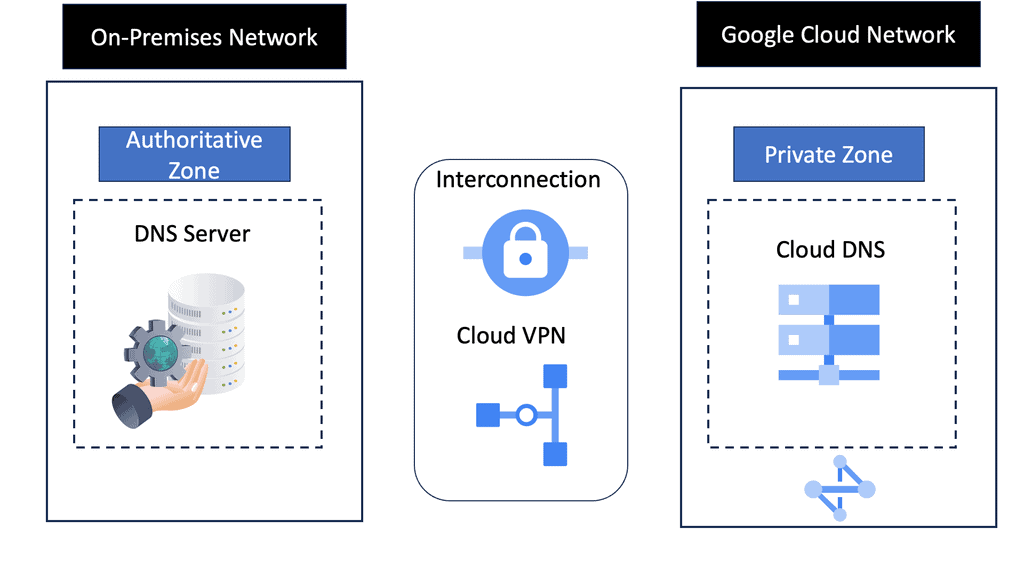 ### Getting Started with Google Cloud DNS
### Getting Started with Google Cloud DNS
Setting up your domains with Google Cloud DNS is straightforward. First, you need to create a Google Cloud account if you haven’t already. Once logged in, navigate to the Cloud DNS section of the Google Cloud Console. From here, you can create new DNS zones, add records, and manage your existing domains. Google provides extensive documentation and support to help you configure your DNS settings according to your needs.
### Benefits of Using Google Cloud DNS
The advantages of using Google Cloud DNS extend beyond its technical capabilities. By leveraging Google’s global network, you ensure that your domain names are resolved quickly and reliably across the world. This can significantly enhance the user experience for your website visitors, reducing load times and improving accessibility. Additionally, the integration with Google’s ecosystem means you can easily combine DNS management with other cloud services, streamlining your operations.
Example SASE Technology: IPS IDS
Understanding Suricata
Suricata is an open-source intrusion detection and prevention system (IPS/IDS) for high-speed network traffic analysis. It utilizes multi-threading and a rule-based detection engine to scrutinize network traffic for potential threats, providing real-time alerts and prevention measures. Its versatility extends beyond traditional network security, making it a valuable asset for individuals and organizations.
Suricata offers extensive features that enable efficient threat detection and prevention. Its rule-based engine allows for customizable rule sets, ensuring tailored security policies. Additionally, Suricata supports various protocols, including TCP, UDP, and ICMP, further enhancing its ability to monitor network traffic comprehensively. Advanced features like file extraction, SSL/TLS decryption, and protocol detection add another layer of depth to its capabilities.
The Synergy of SASE and SD-WAN Integration
When SASE and SD-WAN are combined, a networking solution delivers the best of both worlds. By integrating SD-WAN capabilities into the SASE architecture, organizations can simultaneously leverage the benefits of secure connectivity and optimized network performance. This integration allows for intelligent traffic routing based on security policies, ensuring that sensitive data flows through secure channels while non-critical traffic takes advantage of optimized paths.
One significant advantage of integrating SASE and SD-WAN is simplified network management. With a unified platform, IT teams can centrally manage and monitor network connectivity, security policies, and performance. This centralized approach eliminates the need for complex and fragmented network management tools, streamlining operations and reducing administrative overhead.
**Use Case: DMVPN and SD-WAN**
**Example: DMVPN over IPSec**
DMVPN is a tunneling protocol that allows for the creation of virtual private networks over a public network infrastructure. Unlike traditional VPNs, DMVPN offers a dynamic and scalable architecture, making it ideal for large-scale deployments. By leveraging multipoint GRE (Generic Routing Encapsulation), DMVPN enables direct communication between remote sites without needing a full-mesh topology. This significantly simplifies network management and reduces overhead.
**DMVPN & Security**
IPsec, short for Internet Protocol Security, is a widely adopted protocol suite that provides secure communication over IP networks. It offers confidentiality, integrity, and authentication services, ensuring that data transmitted between network nodes remains secure and tamper-proof. IPsec establishes a secure channel between DMVPN nodes by encrypting IP packets and protecting sensitive information from unauthorized access.
**Combining DMVPN and IPsec**
The combination of DMVPN and IPsec benefits organizations seeking robust and scalable networking solutions. Firstly, DMVPN’s dynamic architecture allows for easy scalability, making it suitable for businesses of all sizes. Additionally, using IPsec ensures end-to-end security, safeguarding data from potential threats. Moreover, by eliminating the need for a full-mesh topology, DMVPN reduces administrative overhead, simplifying network management processes.
DMVPN Single Hub, Dual Cloud Architecture
The single hub, dual cloud configuration takes DMVPN to the next level by enhancing redundancy and performance. This architecture connects a central hub to two separate cloud providers, creating a highly resilient and highly available network infrastructure. This setup ensures the network remains operational even if one cloud provider experiences downtime, minimizing disruptions and maximizing uptime.
a. Enhanced Redundancy: The single hub, dual cloud DMVPN architecture significantly improves network redundancy by connecting to two cloud providers. In a cloud provider outage, traffic is automatically rerouted to the alternate cloud, ensuring seamless connectivity and minimal impact on business operations.
b. Optimized Performance: With dual cloud connectivity, the network can distribute traffic intelligently, leveraging the resources of both cloud providers. This load balancing enhances network performance, efficiently utilizing available bandwidth and minimizing latency.
c. Scalability: Single hub, dual cloud DMVPN offers scalability, enabling businesses to expand their network infrastructure as their requirements grow easily. New sites can seamlessly integrate into the architecture without compromising performance or security.
Related: Before you proceed, you may find the following post helpful for pre-information:
SASE Networking
Starting SASE Networking
We have a common goal to achieve this. To move users closer to the cloud services they are accessing. However, traffic sent over the Internet is all best-effort and is often prone to bad actors’ attacks and unforeseen performance issues. Over 14,000 BGP incidents occurred last year, so cloud access over the Internet varies if BGP is unstable.
No one approach solves everything, but deploying SASE ( secure access service edge ) will give you a solid posture. Secure Access Service Edge deployment is not something you take out of a box and plug in.
A careful strategy is needed, and I recommend starting with SD-WAN. Specifically, SD-WAN security creates an SD-WAN SASE design. SD-WAN is now mainstream, and cloud security integration is becoming critical, enabling enterprises to evolve to a cloud-based SASE architecture. The SASE Cisco version is called Cisco Umbrella.
**Security SASE**
As organizations have shifted how they connect their distributed workforce to distributed applications in any location, the convergence of networking and cloud security has never been more critical. And that is what security SASE is all about—bringing these two pillars together and enabling them from several cloud-based PoPs.
Designing, deploying, and managing end-to-end network security is essential in today’s constant attacks. Zero Trust SASE lays the foundation for customers to adopt a cloud-delivered policy-based network security service model.
**SD-WAN SASE**
Then, we have Cisco SD-WAN, a cornerstone of the SASE Solution. In particular, Cisco SD-WAN integration with Cisco Umbrella enables networks to access cloud workloads and SaaS applications securely with one-touch provisioning, deployment flexibility, and optimized performance.
We have several flexible options for journeying to SASE Cisco with Cisco SD-WAN. Cisco has a good solution combining Cisco SD-WAN and cloud-native security, Cisco Umbrella, into a single offering that delivers complete protection. We will get to how this integrates in just a moment.
However, to reach this integration point, you must first understand the stage in your SASE journey. Everyone will be at different stages of the SASE journey, with unique networking and security requirements. For example, you may still be at the SD-WAN with on-premises security.
Then, others may be further down the SASE line with SD-WAN and Umbrella SIG integration or even partially at a complete SASE architecture. As a result, there will be a mixture of thick and thin branch site designs.
SASE Network: First steps
A mix of SASE journey types will be expected, but you need a consistent, unique policy over this SASE deployment mix. Therefore, we must strive for a compatible network and security function anywhere for continuous service.
As a second stage to consider, most are looking for multi-security services, not just a CASB or a Firewall. A large number of organizations are looking for multi-function cloud security services. Once you move to the cloud, you will increase efficiency and benefit from multi-functional cloud-delivered security services.
SASE Network: Combined all security functions
So, the other initial step to SASE is to combine security services into a cloud-delivered service. All security functions are now delivered from one place, dispersed globally with PoPs. This can be done with Cisco Umbrella, a multi-function security SASE solution.
Cisco Umbrella integrates multiple services to manage protection and has all of this on one platform. Then, you can deploy it to the locations where it is needed. For example, some sites only need the DNS-layer filtering; for others, you may need full CASB and SWGs.
SASE Network: Combine security with networking
Once we have combined all security functions, we need to integrate networking into security, which requires a flexible approach to meeting multi-cloud at scale. This is where we can introduce SD-WAN as a starting point of convergence. SD-WAN’s benefits are clear: dynamic segmentation, application optimization, cloud networking, integrated analytics, and assurance. So, we are covering technology stacks and how the operations team consumes the virtual overlay features.
Cisco SD-WAN use cases that can help you transform your WAN edge with deeper cloud integration and rapid access to SASE Cisco. So you can have Cisco Umbrella cloud security available from the SD-WAN controller and vice versa. So this is a good starting point.
Secure Access Service Edge
New connectivity structures: Let us rewind for a moment. The concept of Secure Access Service Edge is based on several reasons. Several products can be combined to form an SASE offering. The main reason for SASE is the major shift in the IT landscape.
We have different types of people connecting to the network, using our network to get to the cloud, or there can be direct cloud access. This has driven the requirements for a new security architecture to match these new connectivity structures. Nothing can be trusted, so you need to evolve your connectivity requirements.
Shift Workflows to the cloud: There has been a shift of workloads moving to the cloud. Therefore, there are better approaches than providing a data center backhaul to users requesting cloud applications. Backhauling to a central data center to access cloud applications is an actual waste of resources.
And should only be used for applications that can’t be placed in the cloud. This will result in increased application latency and unpredictable user experience. However, the cloud drives a significant network architect shift; you should take advantage of this.
SASE Network: New SASE design
Initially, we had a hub-and-spoke architecture with traditional appliances, but we have moved to a design where we deliver network and security capabilities. This puts the Internet at the center, creating a global cloud edge that makes sense for users to access, not just go to central data because it’s there.
This is the paradigm shift we are seeing with the new SASE architecture. So, users can connect directly to this new cloud edge, the main headquarters can join the cloud edge, and branch offices can connect via SD-WAN to the cloud edge.
So, this new cloud edge contains all data and applications. Then, you can turn the other security and network functions that each cloud edge PoP needs into a suite for the branch site or remote user connecting.
1) The need for DIA
Firstly, most customers want to leverage Direct Internet Access (DIA) circuits because they want the data center to be something other than the aggregation path for most of the traffic going to the cloud. Then, we have complications or requirements for some applications, such as Office 365.
In this case, there is a specific requirement from Microsoft. Such an application can not be subject to the proxy. Office365 demands DIA and should be provided with Azure ExpressRoute, for example.
2) Identity Security
Then, we will consider identity and identity security. We have new endpoints and identities to consider. We must consider multiple contextual factors when determining the risk level of the identity requesting access. Now that the premier has shifted, how do I have complete visibility of the traffic flow and drive consistent identity-driven policy—not just for the user but also for the devices?
3) Also, segmentation. How do you extend your segmentation strategy to the cloud and open up new connectivity models? For segmentation, you want to isolate all your endpoints, and this may include IoT, CCTV, and other devices.
**Identity Security Technologies**
Multi-factor authentication (MFA) can be used here, and we can combine multiple authentication factors to grant access. This needs to be a continuous process. I’m also a big fan of Just in Time access. Here, we only give access to a particular segment for a specific time. Once that time is up, access is revoked. This certainly reduces the risk of Malware spreading. In addition, you can isolate privileged sessions and use step-up authentication to access critical assets.
Security SASE
SASE Cisco converges the network, connectivity, and security into a user service. It is an alternative to the traditional on-premises approach to protection. And instead of having separate silos for network and security, SASE unifies networking and security services and delivers edge-to-edge protection.
All-in-one box
SASE is more of a journey to reach than an all-in-one box you can buy and turn on. We know SASE entails Zero Trust Network Access (ZTNA), SD-WAN, CASB, FWaaS, RBI, and SWG, to name a few.
SASE Effectivity wants to consolidate adequate security and threat protection through a single vendor with a global presence and peering relationships.
**SASE connectivity: SD-WAN SASE**
Connectivity is where we need to connect users anywhere to applications everywhere. This is where the capabilities of SD-WAN SASE come into play. SD-WAN brings advanced technologies such as application-aware routing, WAN optimization, per-segment topologies, and dynamic tunnels.
**SD-WAN Driving Connectivity**
Now, we have SD-WAN that can handle the connectivity side of things. Then, we need to move to control based on the security side. Control is required for end-to-end threat visibility and security. So, even though the perimeter has shifted, you still need to follow the zero trust model outside of the traditional boundary.
Multiple forms of security drive SASE that can bring this control; the main ones are secure web gateways, cloud-delivered firewalls, cloud access security brokers, DNS layer security, and remote browser isolation. We need these network and security central pillars to converge into a unified model, which can be provided as a software-as-a-service model.
**Building the SASE architecture**
There can be several approaches to forming this architecture. We can have a Virtual Machine (VM) for each of the above services, place it in the cloud, and then call this SASE. However, too many hops between network and security services in the VM design will introduce latency. As a result, we need to have a SASE approach that is born for the cloud. A bunch of VMs for each network and security service is not a scalable approach.
SASE: Microservices Architecture
Therefore, a better approach would be to have a microservices, multi-tenancy container architecture with the flexibility to optimize and scale. Consider the SASE architecture to be cloud-native.
A multitenant cloud-native approach to WAN infrastructure enables SASE to service any edge endpoint, including the mobile workforce, without sacrificing performance or security. It also means the complexities of upgrades, patches, and maintenance are handled by the SASE vendor and abstracted away from the enterprise.
Cisco Umbrella is built on a cloud-native microservices architecture. However, the umbrella does not alone provide SASE; it must be integrated with other Cisco products to provide the SASE architecture. Let’s start with Cisco SD-WAN.
Cisco SD-WAN: Creating SD-WAN SASE
SD-WAN grew in popularity as a more agile and cloud-friendly approach to WAN connectivity. With large workloads shifting to the cloud, SD-WAN gave enterprises a more reliable alternative to Internet-based VPN and a more agile, affordable alternative to MPLS for several use cases.
Underlay – Overlay Network Design
In addition, by abstracting away underlying network transports and enabling a software-defined approach to the WAN, SD-WAN helped enterprises improve network performance and address challenges such as the high costs of MPLS bandwidth and the trombone-routing problem.
SD-WAN is essential for SASE success and is a crucial building block for SASE. SASE Cannot Deliver Ubiquitous Security without the Safeguards SD-WAN Provides, Including:
- Enabling Network Address Translation (NAT)
- Segmenting the network into multiple subnetworks
- Firewalling unwanted incoming and VLAN-to-VLAN traffic
- Securing site-to-site/in-tunnel VPN
So, SD-WAN can ride on top of any transport, whether you have an MPLS or internet breakout, and onboard any users and consumption model. This is a good starting point for SASE. Here, we can use SD-WAN embedded security as a starting point for SASE.
Example: Underlay & Overlay with GRE
SD-WAN Security Stack: SD-WAN SASE
The SD-WAN security stack is entirely consistent on-premises and in the cloud. SD-WAN supports the enterprise firewall, which is layer 7 aware, an intrusion prevention system built on SNORT, URL filtering, advanced malware protection, and SSL proxy.
A container architecture enables everything except the enterprise firewall; automated security templates exist. So, based on the intent, the SD-WAN component of vManage will push the config to the WAN edge so that the security services can be turned on.
And all of this can be done with automated templates from the SD-WAN controller. It configures the Cisco Umbrella from Cisco SD-WAN. What I find helpful about this is the excellent integration between vManage—essentially, streamlining security. There are automated templates in vManage that you can leverage to achieve this functionality in Cisco Umbrella.
Cisco Umbrella: Enabling Security SASE
The next level of the SASE journey would be with Cisco Umbrella. So, we still have the SD-WAN network and security capabilities enabled. An SD-WAN fabric provides a secure connection to connect to Cisco Umbrella, gaining all the benefits of the SD-WAN connecting model, such as auto tunnel and intelligent traffic steering.
This can be combined with Cisco Umbrella’s cloud security capabilities. So, with these two products combined, we are beginning to fill out our defense in the depth layer of security functions. Multiple security features will also work together to strengthen your security posture.
SD-WAN SASE: Connecting the SASE Network
We use a secure IPsec tunnel for SD-WAN to connect to Cisco Umbrella. An IPsec tunnel is set up to the Cisco Umbrella by pushing the SIG feature template. So, there is no need to set up a tunnel for each WAN edge at the branch.
The IPsec tunnels at the branch are auto-created to the Cisco Umbrella headend. This provides deep integration and automation capabilities between Cisco SD-WAN and Cisco Umbrella. You don’t need to design this; this is done for you.
IPsec Tunnel Capabilities
What type of IPsec capabilities do you have? Remember that each single IPsec tunnel can support 250 Mbps and burst higher if needed. In the case of larger deployments, multiple tunnels can be deployed to support higher capacity. So, active-active tunnels can be created for more power. There is also an excellent high available with this design. You have an IPsec tunnel established to primary Cisco Umbrella PoP.
If this Cisco Umbrella goes down, all the services can be mapped to a secondary Umbrella data center in the same or a different region if needed. It is doubtful that two SASE PoPs will go down in the areas of the same region.
Hybrid Anycast handles the failure to secondary SASE PoP or DR site. You don’t need to design this; it is done automatically for you. So, with this design, Cisco has what is known as a unified deployment template called the “Secure Internet Gateway Template.”
Active-active tunnels
The Cisco SD-WAN vManage auto-template allows up to 4 active tunnels, operating at 250 Mpbs each from a single device. The Cisco SD-WAN can then ECMP load-balance traffic on each of the tunnels. Eight tunnels can be supported, but only four can be active.
These tunnels are established from a single Public IP address using NAT-T, which opens up various design options. Now, you can have active-active tunnels, weighted load balancing, and flexible traffic engineering with a unique template.
We know that each tunnel supports 250 Mbps. We now support four tunnels with ECMP for increased throughput. These four tunnels can give you 1Gbps from the branch to the Cisco Umbrella headend. So, as a network admin, you can pass 1Gpbs of traffic to the Umbrella SIG to maintain performance.
IPsec Tunnel configuration
For weighted load balancing, we can have, let’s say, two tunnels to the Cisco Umbrella with the same weight. These are two DIA circuits with the same bandwidth. So when the importance is confirmed the same for the different ISPs, the traffic will be equally load-balanced. Cisco uses per-flow load balancing and not per-packet load balancing. The Cisco load balancing is done by flow pinning, where a flow is dictated by hashing the four Tuple.
So, for example, there will be a static route pairing to both tunnels, and the metric will be the same; you can also have an unequal-cost multi-path use case. You may have small branch sites with dual DIA circuits and different bandwidths and entitlements.
Traffic can be steered at 80:20 over the DIA circuits to optimize the WAN. If you had a static route statement, you would see different metrics.
Example Technology: IPsec
Policy-Based Routing to Cisco Umbrella
You can also have policy-based routing to Cisco Umbrella. This allows you to configure flexible traffic engineering. For example, you would like only specific application traffic from your branch to Umbrella. So, at one branch site, you should send Office 365 or GitHub traffic to Cisco Umbrella; then, at Branch 2, you should send all traffic. This would include all cloud and internet-bound traffic. So we can adopt the use case for each design requirement.
Policy-based routing to the Cisco Umbrella allows you to select which applications are sent to the Umbrella, limiting what types of traffic are routed to the Umbrella by their presence; here, we are leveraging Deep Packet Inspection (DPI) for application classification within data policy. All of this is based on an app-aware data policy.
Layer 7 Health check
You will also want to monitor the IPsec tunnel health during brownouts. An underlying transport issue could cause this. And dynamically influence traffic forwarding based on high-performing tunnels. Here, Cisco has an L7 tracker with a custom SLA that can be used to monitor the tunnel health. The L7 tracker sends an HTTPing request to the Umbrella service API ( service.sig.umbrella.com) to measure RTT latency and then compares this to the user’s configured SLA. If tunnels do not meet the required SLA, they are marked down based on the tracker status. The traffic will then go through the available tunnels.
SD-WAN and SASE
Summary: SD WAN SASE
In today’s increasingly digital world, businesses constantly seek innovative solutions to enhance network connectivity and security. SD-WAN SASE (Software-Defined Wide Area Network Secure Access Service Edge) is a groundbreaking technology. In this blog post, we delved into the intricacies of SD-WAN SASE, its benefits, and how it is revolutionizing network connectivity.
Section 1: Understanding SD-WAN
SD-WAN, or Software-Defined Wide Area Network, is a virtualized approach to connecting and managing networks. It allows organizations to efficiently connect multiple locations, whether branch offices, data centers, or cloud-based applications. By leveraging software-defined networking principles, SD-WAN offers enhanced agility, performance, and cost savings compared to traditional WAN solutions.
Section 2: Unveiling SASE
SASE, which stands for Secure Access Service Edge, is a transformative concept that combines network security and WAN capabilities into a unified cloud-based architecture. It enables organizations to consolidate networking and security functions, delivering comprehensive protection and improved performance. SASE replaces the traditional hub-and-spoke network model with a more agile and secure architecture.
Section 3: The Synergy of SD-WAN and SASE
When SD-WAN and SASE are combined, the result is a powerful solution that brings together the benefits of both technologies. SD-WAN provides network agility and scalability, while SASE ensures robust security measures are seamlessly integrated into the network. This synergy enables organizations to optimize their network performance while safeguarding against evolving cybersecurity threats.
Section 4: Benefits of SD-WAN SASE
4.1 Enhanced Performance and User Experience: SD-WAN SASE optimizes traffic routing, ensuring applications and data take the most efficient path. It prioritizes critical applications, resulting in improved performance and user experience.
4.2 Simplified Network Management: The unified architecture of SD-WAN SASE simplifies network management by consolidating various functions into a single platform. This streamlines operations and reduces complexity.
4.3 Enhanced Security: With SASE, security functions are natively integrated into the network. This ensures consistent and comprehensive protection across all locations, devices, and users, regardless of their physical location.
4.4 Cost Savings: SD-WAN SASE reduces the reliance on expensive hardware and dedicated security appliances, resulting in cost savings for organizations.
Conclusion:
In conclusion, SD-WAN SASE is transforming the landscape of network connectivity and security. By combining the agility of SD-WAN and the robustness of SASE, organizations can achieve optimal performance, enhanced security, simplified management, and cost savings. Embracing this innovative technology can empower businesses to stay ahead in the ever-evolving digital world.
- DMVPN - May 20, 2023
- Computer Networking: Building a Strong Foundation for Success - April 7, 2023
- eBOOK – SASE Capabilities - April 6, 2023

